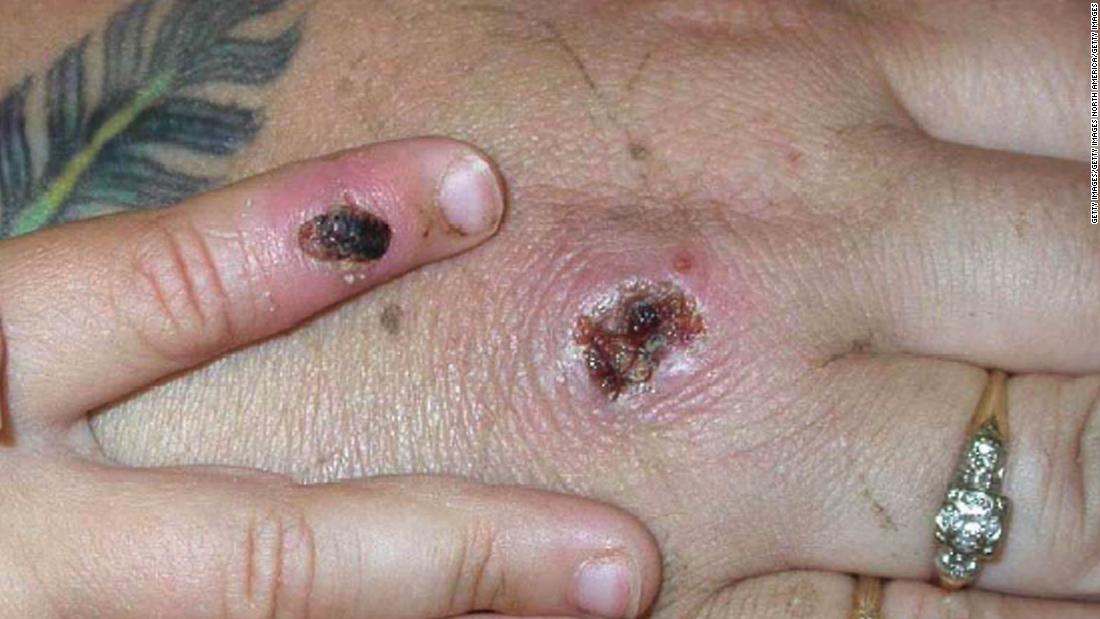The so-called “monkey pox” or “simian pox” -monkeypox in English- has sounded the alarms in Europe and the United States. Next, we explain what it is, what its symptoms are and in which countries cases have been reported so far.
Monkeypox, endemic to Central and West Africa, is a rare but dangerous infection similar to the now eradicated smallpox virus. It is usually contracted from a rodent or small mammal and is not easily spread from person to person. However, the monkeypox virus can be spread through contact with bodily fluids, monkeypox sores, or items such as clothing and bedding that have been contaminated with the virus. It can also spread from person to person through respiratory droplets, usually in a closed environment, according to the US Centers for Disease Control and Prevention (CDC).
What are symptoms?
Monkeypox usually has milder symptoms than smallpox. According to the CDC, the disease begins with a fever, headache, muscle aches, back pain, chills, swollen lymph nodes—a symptom that smallpox does not have—and exhaustion. Up to three days after you have a fever, you may develop a rash on your face and body that progresses to crusty skin lesions.
The incubation period—that is, the time from when a person is infected until they have symptoms—for monkeypox is usually 7 to 14 days, but can range from 5 to 21 days, the CDC reports. The illness usually lasts between 2 and 4 weeks.
People who may have symptoms of monkeypox, and those who have close contact with them, should contact their doctor if they have any unusual rashes or lesions, the CDC says.
“The infection can spread when someone is in close contact with an infected person; however, there is a very low risk of transmission to the general population,” reads a statement from the UK Health Security Agency (UKHSA).
Suspected cases in the US, UK, Portugal and Spain
So far, cases of monkeypox have been detected in the United States, the United Kingdom, Spain, and Portugal.
The CDC is collaborating with Massachusetts health officials on an investigation into a case of monkeypox, the agency said in a statement Wednesday.
The monkeypox case was confirmed in a man in Massachusetts who had recently traveled to Canada, state health officials announced earlier in the day.
Canadian health officials say no cases of monkeypox have been reported to the Public Health Agency of Canada.
The CDC says it’s also tracking multiple clusters of monkeypox that have been reported in the last two weeks in several countries that don’t normally report this type of disease, including Portugal, Spain and the United Kingdom.
In the case of the United Kingdom, the disease was detected in a patient in England, according to the UKHSA, which also stated that “the patient has a recent travel history from Nigeria, which is where he is believed to have contracted the infection, before travel to the UK.
The patient is being treated in the specialist infectious disease and isolation unit at Guy’s and St Thomas’ NHS Foundation Trust in London.
Since then, Reuters says in a report that six more cases have been reported in the country. The first case was reported on May 7.
In addition, in Portugal, 5 patients with monkeypox were identified, of the 20 cases still suspected, according to Reuters, which also states that the Spanish health services are analyzing 23 possible cases and that eight cases are already being tested.
“It is not clear how people in these groups were exposed to monkeypox, but the cases include people who identify themselves as men who have sex with men,” the CDC said in a news release.

